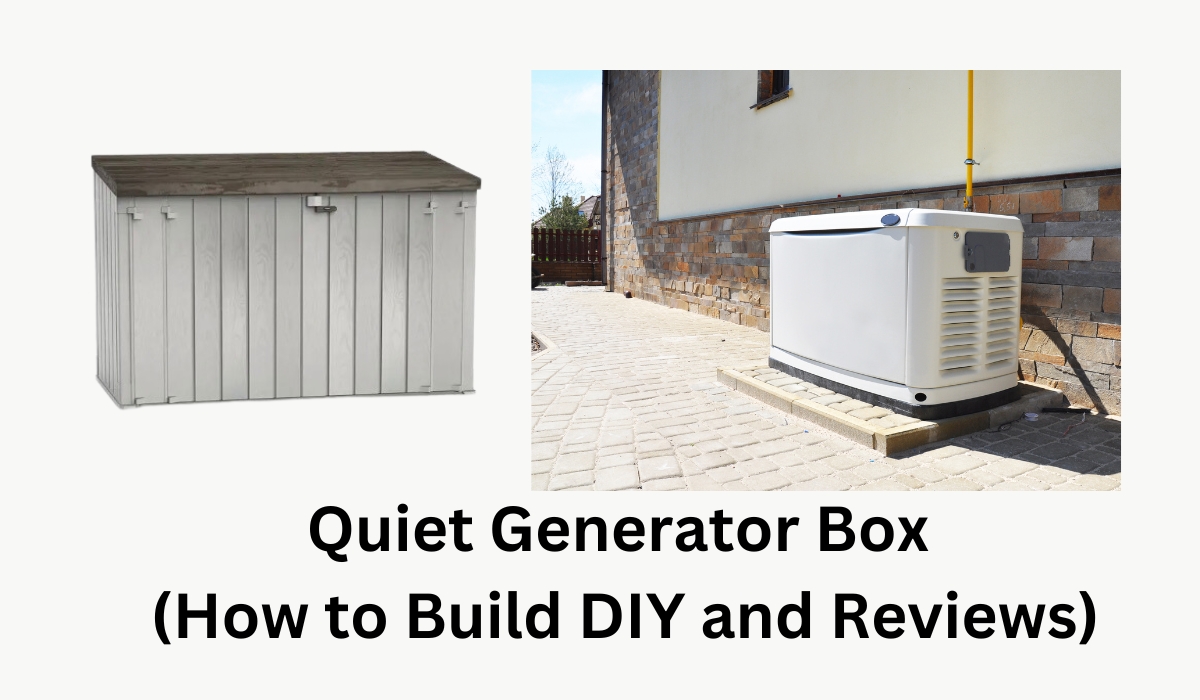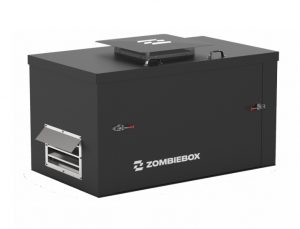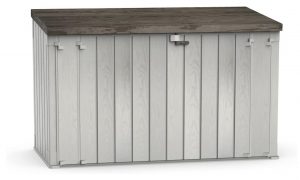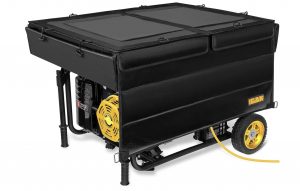Quiet Generator Box (How to Build DIY and Reviews)

* This site contains affiliate links for which we may be compensated.
In this article, we will explore the world of quiet generator boxes. We’ll begin by providing a step-by-step guide on how to build a DIY generator box to reduce noise levels. Following that, we’ll offer some helpful tips for purchasing a pre-made generator box or enclosure. Lastly, we will provide brief reviews of three popular quiet generator box products to assist you in making an informed decision. Whether you prefer a hands-on approach or want to explore ready-made options, this article will guide you towards a quieter generator experience. Let’s dive in!
| Quiet Generator Box Review | Buy / More Info |
|---|---|
| 1. Zombiebox Generator Enclosure | » check now |
| 2. Solid Storage Sheds | » check now |
| 3. Generator Running Cover | » check now |
| Homemade Generator Quiet Box (How to Build DIY) | |
| Generator Box/Enclosure Buying Tips | |
| Quiet Generator Box Reviews |
Homemade Generator Quiet Box (How to Build DIY)
If you prefer a hands-on approach and enjoy DIY projects, building your own generator quiet box can be a cost-effective solution to reduce noise levels. Generators are incredibly useful during power outages or when you’re camping, but the noise they produce can be disruptive and bothersome. By following these steps, you can create a homemade generator box that helps minimize the noise and makes your experience more pleasant.
Step 1: Gather Materials
To build your generator quiet box, you will need several materials. It’s important to gather everything you need before starting the project. Here’s a list of the materials you will require:
• Soundproofing material: Mass loaded vinyl and acoustic foam are commonly used options for soundproofing. These materials absorb sound and prevent it from escaping the box.
• Plywood or MDF boards: Choose sturdy materials like plywood or MDF (Medium Density Fiberboard) to construct the box. These materials provide durability and stability to the structure.
• Hinges and latches: You will need hinges and latches to create a removable panel that allows easy access to the generator when necessary.
• Ventilation fans: Installing ventilation fans ensures proper airflow and prevents overheating of the generator.
• Acoustic caulk or sealant: Use acoustic caulk or sealant to seal any gaps or seams in the box, reducing sound leakage.
• Tools: Prepare the necessary tools for the project, including a saw, drill, screws, and other tools that may be required based on your design.
• Green glue: Green Glue is a popular sound-damping compound that can be used to enhance soundproofing. Applying it between layers of plywood or MDF boards helps absorb and dissipate sound vibrations.
Step 2: Measure and Design
Before you start building the box, measure the dimensions of your generator and plan the size and shape of the box accordingly. Sketch out the design, ensuring there is enough space for ventilation and easy access to the generator for maintenance or refueling.
Step 3: Construct the Box Frame
Cut the plywood or MDF boards according to your measurements and assemble the box frame using screws. Reinforce the corners to provide added stability to the structure.
Step 4: Soundproofing the Box
Line the inside of the box with soundproofing material such as mass loaded vinyl or acoustic foam. Use adhesive or screws to secure the material in place, ensuring that all sides of the box are covered. This soundproofing layer will help trap and absorb the noise produced by the generator.
Step 5: Ventilation Installation
To prevent the generator from overheating, it’s essential to install ventilation fans. Cut holes in the box to accommodate the fans and secure them in place using screws or brackets. These fans will allow proper airflow and dissipate the heat generated by the generator.
Step 6: Access and Maintenance
Attach hinges and latches to create a removable panel that provides easy access to the generator for maintenance or refueling. Make sure the panel fits securely and seals tightly when closed to avoid any sound leakage.
Step 7: Sealing the Gaps
To minimize sound leakage, apply acoustic caulk or sealant around any gaps or seams in the box. Pay special attention to the areas where the removable panel and ventilation fans are installed. This step helps ensure that the noise remains contained within the box.
Step 8: Green Glue Application
For additional soundproofing, you can use Green Glue, a popular sound-damping compound. During the assembly of the box, apply the Green Glue between the layers of plywood or MDF boards. This will help absorb and dissipate sound vibrations, further reducing noise transmission.
Step 9: Testing and Adjustments
Once you have completed the construction of your homemade generator quiet box, it’s time to test its effectiveness. Start the generator inside the box and observe the noise reduction. If you notice any areas where sound leakage is still occurring, use acoustic caulk or sealant to seal those gaps.
It’s important to note that while building a DIY generator quiet box can significantly reduce noise levels, it may not completely eliminate all noise. However, with proper construction and soundproofing techniques, you can achieve a noticeable reduction in generator noise. Enjoy the benefits of a quieter generator and a more peaceful environment!
Generator Box/Enclosure Buying Tips
If building a DIY generator box isn’t your preferred option, you can consider purchasing a pre-made generator box or enclosure. Here are some tips to help you choose the right one:
1. Size and Compatibility: Check that the generator box can accommodate the dimensions of your particular generator. Before purchasing, make sure you check the manufacturer-provided dimensions and compatibility standards.
2. Noise Reduction: Look for boxes that have insulation, acoustic panels, or other sound-dampening measures that effectively reduce noise. The decibel rating and user experiences with noise reduction should be taken into account.
3. Ventilation: Check to see if the enclosure has the appropriate ventilation systems to avoid getting too hot and to make sure there is enough airflow. Look for components such as vents, louvers, and fans that can improve air circulation without sacrificing the level of noise suppression provided by the structure.
4. Durability and Weatherproofing: Consider the materials used in the construction of the box to ensure it is sturdy and weather-resistant. Look for options that are made of durable materials like steel, aluminum, or high-quality plastics, which can withstand outdoor conditions.
5. Ease of Access: Opt for a box with convenient access points that allow for easy maintenance, refueling, and operation of the generator. Look for features like removable panels, hinged doors, or access flaps that provide easy access without compromising on noise reduction.
Quiet Generator Box Reviews 2025
#1. Zombiebox Generator Enclosure

The Zombiebox Generator Enclosure is a popular choice among generator owners seeking noise reduction. This heavy-duty enclosure is specifically designed to minimize noise levels and provide reliable protection for your generator. It features sound-dampening panels, ventilation ports, and a rugged construction that can withstand various weather conditions. The Zombiebox Generator Enclosure is available in different sizes and configurations to accommodate various generator models.
#2. Solid Storage Sheds
Solid Storage Sheds offers a range of generator enclosures designed to reduce noise levels and protect your generator from the elements. These sturdy and weather-resistant boxes are available in various sizes and designs. They provide effective noise reduction through insulation and soundproofing features. Make sure to select the appropriate size and model based on your generator specifications.
#3. Generator Running Cover
The Generator Running Cover is a portable solution that effectively reduces generator noise. It is designed to fit over the generator and provides a barrier to muffle sound. This cover is lightweight, easy to install, and can be adjusted to fit different generator sizes. It offers a convenient and affordable option for noise reduction without the need for a permanent enclosure.
Conclusion
Building a DIY generator quiet box can be a rewarding project for noise reduction enthusiasts. By following the step-by-step guide provided, you can create a custom box that effectively reduces noise levels and protects your generator. Alternatively, if you prefer a ready-made solution, options like the Zombiebox Generator Enclosure, Solid Storage Sheds, and Generator Running Cover offer effective noise reduction and durability. Evaluate the features, compatibility, and price to select the best option for your requirements. Enjoy a quieter generator experience with a reliable and efficient generator box!









